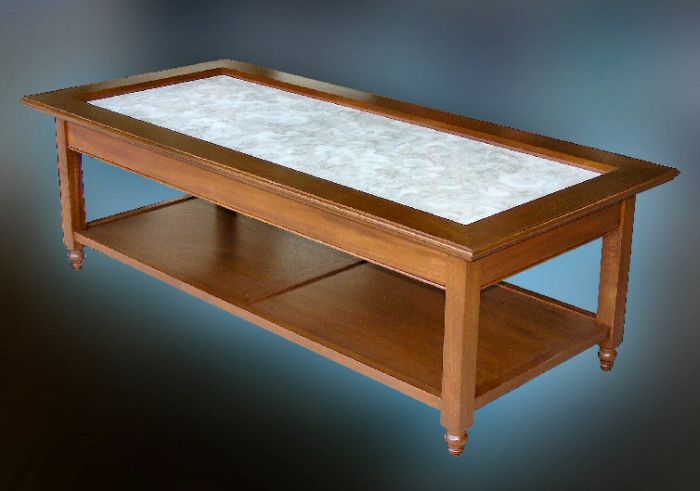Question
We have a client that wants us to make a 60" round mahogany table top that will sit on a center pedestal base for an accent table. We glue up lots of panels for doors, etc. What should we look out for or know about gluing up a table top it will be 11/4" thick when finished and finished on all sides?
Forum Responses
(Furniture Making Forum)
From contributor W:
If it is out of the solid at 1 1/4 just glue it up the same as your panels but obviously pay close attention to the grain and make sure your boards are going together to create a flat top and not a big dish. Make sure that when you attach it to the base that there is plenty of room for seasonal expansion. If there is going to be a decorative edge around it of some sort you may want to consider making it out of ply and maybe wrapping it to create the 1 1/4. A glue up is a glue up, you just have a bigger chance of compounded error on a big top.
1. Try to use quarter-sawn wood or bastard sawn (it will give a nice look, but be little more stable than tangential grain and it will look much better than radial grain - which by the way is the most stable.
2. Look at the end grain and alternate the ring pattern as the earlier contributor mentioned.
3. Know the final environment's RH level and try to build it in the same conditions. Check the MC in the wood to predict the movement.
4. All for wood movement - fix the center so you can float the movement from the center out.
5. Balanced finish on both sided
6. To make easier in clamping and give you more glue surface and make alignment easier, tongue and groove the lumber edges like hardwood flooring. You want have to "wrestle" the top as hard.
Regarding the pedestal, you will be happier if you can make sure that there is a large hole in the center to allow for shrinkage and swelling.
I really don’t follow you on the hole in the pedestal? Is that to benefit the pedestal or the top and how?
The US Forest Products Lab evaluated a bunch of coatings 20 years ago, but coatings have changed, so this comparison data is not too helpful anymore. Maybe they can update their study.
In general, oils do not provide a vapor barrier effect, although multiple coats of tung oil do begin to have some barrier. Varnish (alkyd, phenolic, or polyurethane) has a much greater barrier effect, and are fantastic especially with thick coatings (multiple thin or several thick). Just make sure to coat top and bottom equally.
The pedestal will perform better, and this also includes other round items such as lamps, if there is a sizeable hole in the center. This hole allows the outside to shrink (or swell) a bit without cracking. Further, the inside of the hole should be finished the same as the outside to allow the moisture inside and outside to change at about the same rate and at the same level. Uniform moisture in the wood is also helpful to good performance.
